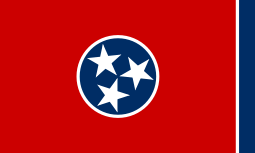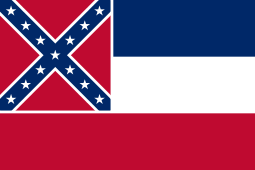Hyde Park, Memphis
Hyde Park (also known as Pocket Town) is a neighborhood in the Hollywood community of Memphis, Tennessee.
Geography
Hyde Park is located on the north side of Memphis, Tennessee, starting around the intersection of Hyde Park St. and Chelsea Ave. Hyde Park lies near the Hollywood community and borders another North Memphis neighborhood known as Douglass.
Community
Hyde Park is known for its long strip down Hollywood Street that is often a lively meeting place. Almost all commercial businesses in the area are located on Hollywood Street or Chelsea Avenue.
Shannon Elementary School
Shannon Elementary School, located at 2248 Shannon Road, is the only elementary school within the perimeters of Hyde Park. The school serves grades PK-5 in the Memphis City/ Shelby County school district.
Cypress Middle School
Cypress Middle School, located at 2109 Howell Street, is the only middle school in Hyde Park. The Memphis City/ Shelby County school serves about 450 students in grades 6-8.
Douglass & Manassas High Schools
There are no high schools located within Hyde Park. Students attend neighboring Douglass High School and Manassas High School. Douglass is named after the 19th Century African-American abolitionist Fredrick Douglass. The school opened in 1946, and boasts several graduating scholars, a world-renowned band and championship sports teams. The court-ordered cross-town busing of the 1970s, and low enrollment, led to the school closing in 1981. The abandoned building was added to the National Register of Historic Places in 1998, but was torn down in 2006 to be replaced by a new building. The new building was started in 2006 and the new Douglass High School opened to students in fall 2008. In May 2010, the school had its first graduating class since 1981. DHS has an active alumni association with more than 500 members in seven chapters across the United States. Rev. William Young established Manassas in 1899. The original Manassas building was a two-room frame structure erected on the west side of Manassas Street, north of Belt Line. In 1909, Mrs. Cora Taylor was appointed principal. Under her leadership, Manassas purchased a tract of land located across the street. In 1921, a two-story frame building was added. A high school grade was added every year until Manassas graduated its first class of 14 members in 1924. Manassas was the first four-year accredited Negro high School in Shelby County. It had the first Negro football team in the city. The success of athletic teams of Manassas can be seen in the trophies on display in the trophy case in the hall near the Main Office. An auditorium with twelve hundred seats was completed in 1924 and a new 50-room modern structure added to the auditorium in 1938. Mr. Louis B. Hobson became the new principal after Mr. Hayes retired in 1953. Mr. Hobson fostered many outstanding educational programs during his 25 years of service with the belief that all students had the ability to obtain greatness. Manassas was further recognized for its students’ superior academic achievements in Mr. Hobson’s administration. The integration of the faculty and student body in Manassas happened around 1974. Mr. Robert S., a young enthusiastic educator, become principal of Manassas High School in 1982. Mr. White accomplished many innovations for Manassas: French was added to the curriculum; advanced courses were added in math and science; Four computer labs were established; Manassas was paired with Trezevant Vocational School in an effort to improve vocational offering. During 1996 and 2001 the staff adopted three schoolwide programs: The Instructional Reform Models, The Middle School Initiative, The Ninth Grade Academy, and High Schools That Work involved all students in a challenging curriculum designed to improve student performance. Manassas changed from a middle/high school to a full-fledged high school with grades nine through twelve during 2001-2002. A vote by the entire Memphis City School Board of Commissioners approved construction of a new school in 2004 and the official groundbreaking ceremony was held on Dec. 13, 2005. The new school officially opened on Jan.7, 2008 on Manassas Street, where it originated in 1899. An Alumni Archive and a library are located in the new school.
Parks
There are many parks in the Hyde Park Community. They are listed as follows:
Gooch Park is located on University Street and Hunter Avenue. It is a 10-acre (40,000 m2) plot of land donated to the community by Cecil Milton Gooch (1889-1869), a retired lumber company owner during that time. The park is also named after Gooch, and it was dedicated to him on November 24, 1957. Gooch Park was also the location of the first African American bicycle derby in Memphis.[1] Today, Gooch Park has a swimming pool, pavilion, three outdoor basketball courts, and play equipment.[2]
Guthrie Park is located on Chelsea Avenue and Decatur Street. Located on this park is Guthrie Elementary School, which was founded in 1915. Near this park is also the Dave Wells Community Center. One of the most notable people to visit the center was Elvis Presley, who played football with some friends there on December 27, 1956.[3]
University Park is located on University Street and Edward Avenue, approximately two blocks away from Gooch Park. University Park is behind Cypress Middle School. It is 10 acres (40,000 m2) and includes play equipment, four tennis courts, and a ball field.[2]
Hollywood Park is located at 1560 N. Hollywood. It is 4.11 acres (16,600 m2) and includes an indoor basketball court, play equipment, and a ball field. The Hollywood Community Center is also located there.[2]
Cypress Creek
Cyprus Creek is a small creek running through North Memphis, originating east of the Memphis fairgrounds and running north until emptying into McKellar Lake. It is an important asset for water drainage and flood control. It has also been the dumping sites of several harmful chemicals. Velsicol was the main target of the court cases involving Cyprus Creek and according to them site investigations and remediation have been completed at all residential areas along the street, with the exception of Springdale Apartments.[4]
Against the wishes of community members, sections of the creek were enclosed by a concrete liner. The residents have been vocal about their wishes for the creek to return to its natural state. The creek has also succumbed to people dumping trash and it especially collects under the bridge. Even though there is no longer chemical dumping, this waste and junk poses a continued risk to the community.[5]
During the channelization process in the 1960s, contaminated sediment was displaced into residents’ backyards and placed on the grounds of local schools. In March 2005, the Tennessee Department of Health conducted tests requested by the Memphis and Shelby County Health Department to examine the levels of toxicity in the creek and the exposure and risk to those living around it. Velsicol Chemical Corporation took its own soil samples and discovered instances of the pesticide aldrin, dieldrin, endrin, and endrin-like chemicals, all of which were produced at the Velsicol plant. However, while Tennessee Department of Health concluded that pesticides in most yards were not hazardous to residents’ health, they also found that in some yards pesticides may have presented a health hazard in the past and may continue to be in the present and future.
The Tennessee Department of Health has recommended that the appropriate government bodies assure the swift cleanup of properties requiring remediation, and that all areas filled with soil from Cypress Creek should be located and tested. In addition, Velsicol is responsible for removing soil from contaminated residential properties, landscaping the property under the guidance of the property owner, and storing the contaminated soil on the Velsicol property before it can be disposed of. Once this process is complete, Velsicol must address non-residential properties adversely affected by the company’s dumping.[6]
On April 1, 2004, certain residents of the Cypress Creek neighborhood of Memphis filed a lawsuit against Velsicol Chemical Corporation, alleging damage to their property from the discharge of dieldrin and related chemicals from the Velsicol plant on Warford Avenue to Cypress Creek. Mildred Isabel et al. v. Velsicol Chemical Corporation. The Creek has also been rumored to cause birth defects in the babies of parents living near the creek, and this was one of the arguments that the plaintiffs had against Velsicol. After investigation, it was determined that this was not the case, though cancer rates are still higher in the neighborhood.[7]
Firestone
Hyde Park used to be a thriving hub of industry also. In 1936 Firestone built a factory in the heart of the community. The space that Firestone had moved into used to be owned by a wood company. The factory was run by Raymond Firestone, the son of Firestone founder Harvey Firestone. Realizing that Memphis was a prime location for business, the Firestone factory expanded its facility to an area of 88 acres (360,000 m2). The plant catered to more than 25,000 tire dealers in Memphis’s marketing region (stretching from Key West to southern Illinois). Firestone also helped in the US efforts during World War II by producing rubber life rafts, gas masks, and raincoats for soldiers.
By the late 1960s, Firestone was selling more than 20,000 car and truck tires a day. Firestone prospered from a company of just a few hundred employees to becoming the biggest industrial employer in Memphis, employing over 3,000. This helped lead to a huge milestone in the Firestone plant’s history. On July 1, 1963, the plant celebrated the production of its 100,000,000th tire. The plant in Memphis was the largest tire manufacturer in the company’s worldwide operation. The smokestack from the company was visible for miles apparently.
The death blow was dealt to Firestone after the introduction of radial tires. Every driver wanted these because they simply handled better. The plant was making radial tires, but they decided to specialize in the older bias-ply tires, leading to Firestone dwindling away. In 1983 it was announced that the Firestone plant was closing. The closure of the plant caused more than 1,500 manufacturing and precision operator jobs between 1980 and 1990. Closure also caused declines in residential neighborhood populations and reduction of residential property values in the neighborhood.
In the mid 1990s the vacant buildings on the lot were demolished. The empty space that the plant used to be sitting on is going to waste, and it is now hurting the community that it helped to prosper so long ago. The plant is now considered as a brown field, an abandoned industrial space causing environmental harm. In 1997, the Environmental Protection Agency noticed the Firestone property and wanted to help with cleaning up this brown field and others across the Shelby County. They awarded $200,000 to help in cleaning up Memphis’s brown fields, with clean up of the Firestone plant at the top of the list of priorities. They helped to destroy the old building that still remained and helped to clean up the soil, so that the property could be fit for development.
With the majority of the lot cleaned, the Firestone plant’s lot could be used in a wide variety of different ways. The idea of a more affordable golf course on this land is the main runner in the ideas of what to do. Since this site lies in the heart of North Memphis, an affordable golf course would help to bring back some of the neighborhood unity that many residents feel has dissipated over the years. The golf course could serve as a new neighborhood focal point, and it may attract other businesses to come and fill the empty space businesses left when they vacated the area many years ago, bringing more jobs to the surrounding neighborhood.[8]
Community centers
There are a few locations in Hyde Park that are central to the community. There is the Shasta Community Center, Hollywood community center, as well as the Hollywood library. The Hollywood Community Center contains a weight-lifting room, a gymnasium, and meeting and multi-purpose rooms. The center offers several classes, some of which are: fitness, youth basketball, educational development, GED programs, dance and music, as well as many more cultural, physical, and mental development programs and activities. It is open Monday through Saturday and is a vital location in the community, especially for the youth and seniors.[9]
Next door to the community center is the Hollywood branch of the Memphis public library system. Along with over 23,000 printed materials, they are also working on their collection of audio and video files for the community to enjoy. Along with these assets, the library offers computers with access to internet and word processing, a job and career center, meeting room, and special event programming. People all over Hyde Park come to the library in order to use its services.[10]
Shasta Central
Shasta Central is an actively engaged community center located in the heart of Hyde Park at 2375 Shasta Avenue, a few blocks away from Cypress Creek and Cypress Middle School. Opened in March 2005 by a partnership between Rhodes College and Dorothy Cox, an active member of the community, employee of Rhodes, and director of the center, Shasta Central stands as a symbol of hopeful progress within the community and an extension of Ms. Cox’s non-profit, Community Mentoring Outreach Services, Inc. Ms. Cox’s mission of hope and confidence, of discovering, utilizing, and enhancing community assets as well as holding residents and government accountable for their equal share of responsibility, is reflected in the efforts and successes implemented by Shasta Central. According to an article published by Rhodes Magazine, several changes have occurred in Hyde Park precisely because of Shasta Central’s involvement. Some of these include:
• Litter has drastically been reduced thanks to multiple organized cleanups by Rhodes students and neighborhood residents and intervention from several city service bureaus. Tire dumping, once common, has ceased.
• The involvement of Rhodes faculty and students in neighborhood schools has increased astronomically, leading to a variety of offshoot projects. Ekstrom’s Cypress Springdale Community Partners, comprising parents, teachers, school administrators and representatives from Buckman Laboratories, local churches and the U.S. Attorney’s Office, formulates strategy. Programming runs the gamut from tutoring and chess clubs to activities that bring neighborhood children and teens to Rhodes.
• A neighborhood association is strong and active, complete with constitution, officers and street captains. Currently the association is developing three projects—a neighborhood garden, continued cleanups and a regular open market where residents can sell their wares.
• Shasta Central—staffed by Cox, fellow COPC executive board member Gene Person, resident Darrell Wright and legions of students—has become the heart of the neighborhood. Groups operating out of the center provide advocacy and a variety of programming. Children gather weekly for supervised play, and there are regular “Healthy Thursdays,” where residents meet for a meal and information on everything from HIV Aids to diabetes to “Coping with the Inner City Blues.”
• Code enforcement has been beefed up and absentee landlords are being held accountable for their properties.
• The Memphis Police Department and Shelby County Sheriff ’s Office have increased their patrols. Recently three drug houses in the area—one on Shasta itself—were closed.[11]
References
| Wikimedia Commons has media related to Hyde Park, Memphis. |
- ↑ "Crossroads Home". Crossroadstofreedom.org. 1968-04-04. Retrieved 2013-10-19.
- 1 2 3 Archived May 28, 2010, at the Wayback Machine.
- ↑ "Elvis Presley Touch Football : Dave Wells Community Center : December 27, 1956". Elvispresleymusic.com.au. Retrieved 2013-10-19.
- ↑ "About Cypress Creek Environmental Program". Cypresscreekmemphis.com. Retrieved 2013-10-19.
- ↑ Ms. Dorothy Cox, Shasta Central.
- ↑ "Cypress Creek Fact Sheet : August 2006" (PDF). Health.state.tn.us. Retrieved 2013-10-19.
- ↑ "Notice of Class Action and Proposed Settlement" (PDF). Cypresscreekmemphis.com. Retrieved 2013-10-19.
- ↑ Lauderdale, Vance (2009-02-14). "Firestone Tire & Rubber Company | Ask Vance Blog | Memphis News and Events". Memphis Flyer. Retrieved 2013-10-19.
- ↑ Archived May 28, 2010, at the Wayback Machine.
- ↑ "Libraries of the Memphis Public Library & Information Center | Memphis Public Library and Information Center". Memphislibrary.org. Retrieved 2013-10-19.
- ↑ Daniel, Daney. "Rhodes College | Rhodes Magazine Archive". Rhodes.edu. Retrieved 2013-10-19.
Coordinates: 35°10′53″N 89°58′32″W / 35.1815°N 89.9755°W






